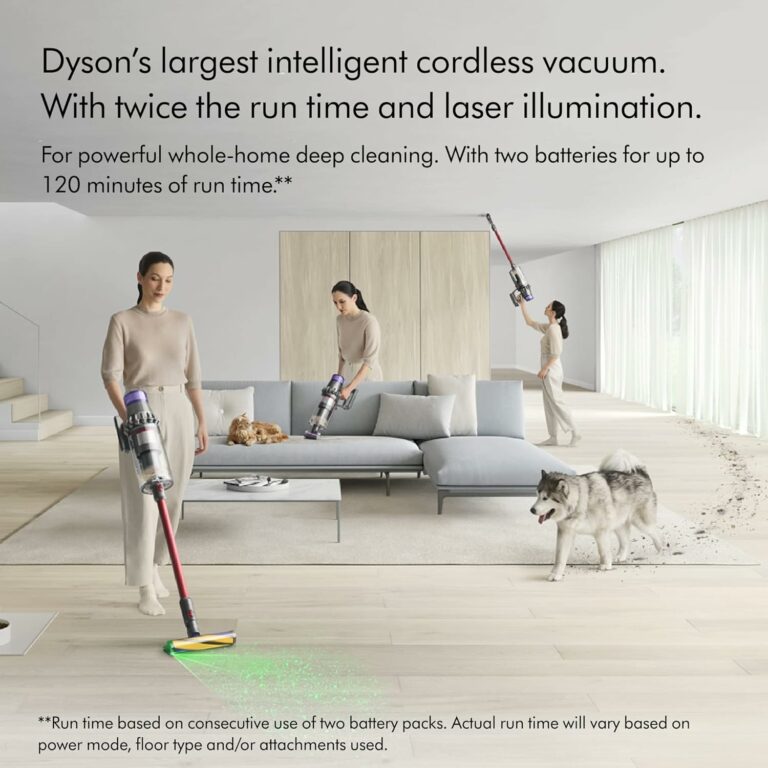In today’s rapidly evolving world, where sustainability is becoming an increasingly vital aspect of our lives, the concept of energy management is gaining significant attention. With the rise of technology, smart homes are playing a crucial role in contributing to sustainability. By utilizing innovative devices and intelligent systems, these smart homes are able to effectively manage energy consumption, reduce waste, and ultimately create a greener and more environmentally-friendly future. With the potential to revolutionize the way we live, energy management in smart homes is not only benefiting our planet but also providing us with greater control and convenience.

Understanding Energy Management
What is energy management?
Energy management refers to the practice of monitoring, controlling, and optimizing the use of energy in buildings or homes. It involves the implementation of various strategies and technologies to reduce energy consumption, improve efficiency, and ultimately contribute to sustainability. Energy management encompasses activities such as monitoring energy usage, identifying areas for improvement, and implementing measures to reduce energy waste.
The importance of energy management
Energy management is crucial for several reasons. Firstly, it helps individuals and homeowners reduce their carbon footprint by minimizing energy consumption. By managing energy use efficiently, smart homes can significantly contribute to sustainability efforts and combat climate change. Secondly, energy management can lead to significant cost savings by reducing energy bills. With the rising cost of energy, implementing energy management measures can help homeowners save money in the long run. Lastly, energy management plays a vital role in ensuring a reliable and stable energy supply. By optimizing energy use, homeowners can mitigate the strain on the electrical grid and contribute to a more resilient energy infrastructure.
Challenges in energy management
While energy management can bring numerous benefits, it also comes with challenges. One of the major hurdles is the lack of awareness and understanding among homeowners about the importance of energy management. Many people are unaware of the impact their energy consumption has on the environment and their wallets. Additionally, implementing energy management systems and technologies can be costly upfront, making it challenging for some homeowners to adopt these measures. Another challenge is the complexity of energy management. Understanding and monitoring energy consumption patterns, identifying energy-saving opportunities, and optimizing energy use require technical expertise and knowledge. Overcoming these challenges requires education, financial support, and accessible technology solutions.
Introduction to Smart Homes
Defining smart homes
A smart home is a residence equipped with advanced technologies that allow for the automation and control of various household functions, such as lighting, heating, security, and entertainment systems. These technologies are interconnected and can be controlled remotely, often through a smartphone or a centralized hub. Smart homes use sensors, networks, and automation to enhance comfort, convenience, and energy efficiency.
Key features of smart homes
Smart homes are characterized by their ability to integrate and automate various devices and systems. Key features of smart homes include:
Home automation: Smart homes can automate routine tasks and adjust settings based on user preferences. This includes controlling lights, temperature, security systems, and entertainment devices.
Connectivity: Smart homes rely on a network of interconnected devices that communicate with each other and can be controlled remotely. This connectivity enables seamless integration and control of different systems within the home.
Sensors and smart devices: Smart homes are equipped with sensors that detect motion, light levels, temperature, and other environmental factors. These sensors provide real-time data that can be used for energy management and optimization.
Energy efficiency: Smart homes are designed to maximize energy efficiency. They incorporate energy-saving technologies, such as smart appliances, energy-efficient lighting, and HVAC systems with programmable thermostats.
Benefits of smart homes for homeowners
Smart homes offer numerous benefits to homeowners, particularly in the realm of energy management. By integrating energy management systems and technologies, smart homes can provide the following advantages:
Energy cost savings: Smart homes enable homeowners to optimize their energy use, leading to reduced energy consumption and lower utility bills. By automating energy-intensive tasks and adjusting settings based on occupancy and user preferences, smart homes can significantly save on energy costs.
Increased comfort and convenience: Smart homes offer enhanced comfort and convenience through automation and remote control capabilities. Homeowners can easily adjust temperature settings, lighting levels, and other parameters to create a comfortable living environment, all from the convenience of their smartphones.
Environmental sustainability: Smart homes play a crucial role in promoting environmental sustainability. By actively managing and reducing energy consumption, smart homes contribute to the global efforts to combat climate change and reduce greenhouse gas emissions.
Improved security and safety: Smart home technologies often encompass advanced security and safety features. Homeowners can monitor and control security systems, such as surveillance cameras and smart locks, from anywhere, providing peace of mind and an increased sense of security.
Increased property value: Smart homes are seen as desirable properties in the real estate market. The integration of advanced technologies and energy management systems can increase the value of a home and attract potential buyers who value energy efficiency and modern convenience.
Overall, smart homes offer homeowners a range of benefits, from energy cost savings and increased comfort to environmental sustainability and improved property value.
Integration of Energy Management in Smart Homes
Incorporating energy management systems
Energy management systems are an integral part of smart homes. These systems encompass a range of technologies and strategies that enable homeowners to monitor, control, and optimize their energy consumption. Smart homes incorporate energy management systems through the integration of smart devices, sensors, and energy management platforms. These systems allow homeowners to track their energy usage, receive real-time data on energy consumption, and make informed decisions to reduce waste and improve efficiency.
Smart meters and monitoring
One of the key components of energy management in smart homes is the use of smart meters. Smart meters differ from traditional meters as they provide detailed information about energy usage, often in real-time. These meters enable homeowners to monitor their energy consumption more effectively and identify areas for improvement. Additionally, smart meters can communicate directly with energy management platforms, allowing homeowners to receive accurate and up-to-date data on their energy usage, further facilitating informed decision-making.
Automated energy consumption optimization
Automation plays a significant role in energy management within smart homes. By integrating smart devices and sensors, homeowners can automate energy-consuming tasks and optimize energy consumption based on user preferences and occupancy. For example, smart thermostats can learn occupants’ patterns and adjust temperature settings accordingly, reducing energy waste. Similarly, smart lighting systems can automatically adjust brightness levels or turn off lights when a room is unoccupied. These automated features not only save energy but also provide convenience and comfort to homeowners.
Energy Efficiency in Smart Homes
Smart appliances and devices
Smart homes utilize energy-efficient appliances and devices to minimize energy consumption. Smart appliances, such as refrigerators, washing machines, and dishwashers, are designed to optimize energy use based on load requirements and user preferences. These appliances can communicate with other devices in the home, allowing for coordination of energy consumption and reducing waste. Smart devices, such as smart plugs and power strips, enable homeowners to monitor and control the power usage of individual devices, further enhancing energy efficiency.
Energy-saving lighting solutions
Smart homes employ energy-saving lighting solutions to reduce electricity consumption. LED lights, for example, are highly energy-efficient and have a longer lifespan compared to traditional incandescent bulbs. In smart homes, these LED lights can be controlled remotely, scheduled to turn on or off, and even adjust brightness levels based on natural light conditions. This level of control allows for energy savings while still providing adequate lighting for different activities and needs.
Insulation and temperature control
Energy efficiency in smart homes is also achieved through effective insulation and temperature control. Proper insulation helps minimize heat loss during winter and heat gain during summer, reducing the need for excessive heating or cooling. Smart homes can utilize programmable thermostats to maintain optimal temperature levels based on occupancy and user preferences. These thermostats can be remotely controlled and even learn occupants’ behavior to automatically adjust temperature settings, ensuring comfort while minimizing energy waste.

Renewable Energy Integration
Solar energy utilization
The integration of solar energy systems is a prominent feature in many smart homes. Solar panels convert sunlight into usable electricity, which can power various devices and systems within the home. Smart homes leverage solar energy by incorporating solar panels on rooftops or other suitable locations. These panels are connected to the home’s electrical system, allowing for the direct utilization of solar-generated electricity. In addition to reducing reliance on the grid, solar energy integration promotes sustainability and can significantly decrease energy costs.
Wind power solutions
In some cases, smart homes also integrate wind power solutions to generate electricity. Small wind turbines can be installed on properties with suitable wind conditions, harnessing wind energy and converting it into electricity. Wind power can complement solar energy and provide renewable electricity generation even when sunlight is limited. By combining solar and wind power, smart homes can diversify their energy sources, increase self-sufficiency, and reduce reliance on the electrical grid.
Advantages of renewable energy in smart homes
The utilization of renewable energy sources in smart homes brings several advantages. Firstly, renewable energy, such as solar and wind power, is clean and sustainable. By generating electricity from renewable sources, smart homes contribute to reducing greenhouse gas emissions and mitigating climate change. Secondly, integrating renewable energy systems can help homeowners achieve energy independence. Generating electricity on-site reduces reliance on traditional energy sources and limits exposure to fluctuating energy prices. Finally, renewable energy integration promotes resilience in the face of power outages or disruptions in the main electrical grid. With energy generation capacity within their homes, smart homeowners can maintain essential services and enjoy uninterrupted power supply during emergencies.
Demand Response and Peak Load Management
Understanding demand response
Demand response refers to the practice of adjusting electricity usage in response to supply and demand conditions. During periods of high demand or strain on the electrical grid, utilities may request homeowners to reduce their energy consumption temporarily. Demand response programs aim to balance the grid and avoid potential blackouts or other grid failures. Homeowners participating in demand response programs can contribute to grid stability by reducing their energy usage during peak demand periods.
Smart homes contributing to demand response
Smart homes are well-suited to participate in demand response programs due to their connectivity and automation capabilities. Through integration with energy management systems, smart homes can receive signals from utilities during peak demand periods and automatically adjust energy consumption. For example, smart appliances can delay certain energy-intensive tasks, such as running the dishwasher or doing laundry, to off-peak hours. By shifting energy usage to less demanding periods, smart homes can contribute to demand response efforts, ensuring a stable and reliable energy supply for everyone.
Managing peak energy loads with smart technology
Peak energy loads, often occurring during hot summer days or severe weather events, place significant stress on the electrical grid. Smart homes can manage peak energy loads by leveraging advanced technologies and automation. For instance, smart thermostats can adjust temperature settings to minimize energy use during peak demand periods. Smart lighting systems can dim or turn off lights in unoccupied areas, further reducing energy consumption. By optimizing energy use during peak load events, smart homes help alleviate strain on the grid and promote grid stability.

Role of Artificial Intelligence in Energy Management
AI-powered energy optimization
Artificial Intelligence (AI) plays a critical role in energy management within smart homes. AI algorithms analyze data from various sources, such as smart meters, sensors, and historical energy consumption patterns, to optimize energy use. By employing machine learning techniques, AI-powered systems can identify energy-saving opportunities, make recommendations, and automate energy-consuming tasks. AI algorithms continuously learn and adapt based on users’ behavior and preferences, leading to more accurate and personalized energy management and optimization.
Machine learning algorithms for energy prediction
Machine learning algorithms are used to predict energy demand and consumption patterns in smart homes. These algorithms analyze historical energy usage data, weather forecasts, and other relevant factors to generate accurate predictions of future energy needs. By forecasting energy demand, machine learning algorithms enable proactive energy management, allowing homeowners to adjust settings and optimize energy consumption before demand peaks. By leveraging machine learning capabilities, smart homes can further improve energy efficiency and contribute to cost savings.
Smart energy management algorithms
Smart energy management algorithms encompass a range of techniques and strategies to optimize energy use within smart homes. These algorithms factor in various parameters, such as occupancy, temperature, weather conditions, and user preferences, to make informed decisions about energy consumption. For example, an algorithm may determine the optimal temperature settings based on occupancy patterns and forecasted weather conditions. Additionally, these algorithms can prioritize energy usage based on time-of-use tariffs, ensuring that energy-intensive tasks are performed during off-peak hours whenever possible. The use of smart energy management algorithms enhances energy efficiency, reduces waste, and promotes sustainability within smart homes.
Improving Sustainability through Energy Storage
Battery storage systems
Energy storage systems, particularly battery storage, play a significant role in improving sustainability in smart homes. Battery storage allows homeowners to store excess energy generated from renewable sources, such as solar or wind power, for later use. During periods of low energy generation or high demand, the stored energy can be utilized, reducing reliance on the electrical grid. Battery storage systems also provide backup power during power outages, enhancing resilience and ensuring continuous energy supply.
Integration of electric vehicle (EV) batteries
The integration of electric vehicle (EV) batteries into smart homes contributes to both sustainable transportation and energy management. EV batteries can serve as energy storage units, allowing homeowners to utilize the stored energy for household consumption when the vehicle is not in use. This bidirectional energy flow between the EV battery and the home’s electrical system, known as vehicle-to-home (V2H) or vehicle-to-grid (V2G) technology, increases energy self-sufficiency and promotes the efficient use of renewable energy.
Benefits of energy storage in smart homes
The integration of energy storage systems, such as batteries, brings several benefits to smart homes. Firstly, energy storage enhances the utilization of renewable energy sources. By storing excess energy during times of high generation and utilizing it during periods of low generation or high demand, smart homes can maximize the use of clean, renewable energy. Secondly, energy storage provides backup power during power outages, ensuring critical systems and appliances can continue to operate. This enhances resilience and reduces dependence on the electrical grid. Lastly, energy storage allows for greater control over energy consumption and cost savings. By utilizing stored energy during peak demand periods or when electricity prices are high, homeowners can avoid peak pricing charges and reduce overall energy costs.
Monitoring and Analyzing Energy Consumption
Real-time energy monitoring
Smart homes provide real-time energy monitoring capabilities, allowing homeowners to track and visualize their energy usage in detail. Energy monitoring platforms or applications provide live data on energy consumption, often broken down by specific systems or devices. By visualizing energy consumption patterns, homeowners can identify energy-intensive devices, monitor usage trends, and detect anomalies or areas for improvement. Real-time energy monitoring empowers homeowners to make informed decisions and take proactive steps to reduce energy waste.
Data analytics for energy consumption
Data analytics techniques are employed to analyze energy consumption data collected from smart devices and sensors within smart homes. Advanced algorithms can identify patterns, trends, and anomalies in energy usage, providing valuable insights into consumption patterns and opportunities for optimization. Data analytics can uncover energy-saving potential by identifying energy-consuming devices or systems that are performing below expected efficiency. By leveraging data analytics, homeowners can make data-driven decisions to improve energy efficiency and reduce waste.
Identifying energy-efficiency opportunities
Monitoring and analyzing energy consumption within smart homes allow homeowners to identify energy-efficiency opportunities. By understanding when, where, and how energy is consumed, homeowners can make informed choices to optimize energy use. For example, by identifying devices or appliances that consume excessive energy or operate inefficiently, homeowners can replace them with more energy-efficient alternatives. Energy analysis can also reveal trends in energy consumption during specific periods, such as high demand hours. Armed with this knowledge, homeowners can adjust energy usage patterns and potentially shift high-energy tasks to off-peak hours, reducing costs and improving efficiency.
The Future of Smart Homes and Energy Management
Emerging technologies in energy management
The future of smart homes and energy management is likely to be shaped by emerging technologies. One such technology is the Internet of Things (IoT), which connects various devices and systems within the home, enabling seamless communication and coordination. IoT-enabled devices can exchange data, share information, and respond to environmental conditions, leading to more efficient energy management.
Another emerging technology is blockchain, which has the potential to transform energy management by enabling decentralized energy transactions and peer-to-peer energy sharing. Blockchain technology can facilitate secure and transparent energy exchanges among neighbors, promoting localized energy production and consumption.
Smart home ecosystems
The integration of smart home ecosystems is a significant trend in the future of energy management. Smart devices, sensors, and energy management systems will be seamlessly connected within a unified ecosystem, allowing homeowners to control and optimize energy use holistically. This integration enables enhanced automation, data exchange, and intelligent energy management across multiple devices and systems within the home.
Role of smart grids in energy management
Smart grids are poised to play a crucial role in the future of energy management in smart homes. Smart grids are advanced electrical grids that incorporate real-time data, communication, and automation to optimize the generation, distribution, and consumption of electricity. By integrating with smart homes, smart grids can enhance energy management by providing accurate data on energy demand, facilitating demand response programs, and enabling optimized energy distribution. The synergy between smart homes and smart grids paves the way for a more efficient, resilient, and sustainable energy future.
In conclusion, energy management within smart homes is a key contributor to sustainability efforts. The integration of energy management systems, smart devices, and renewable energy sources enables homeowners to reduce energy consumption, save costs, and minimize their carbon footprint. With the advancements in technology, such as artificial intelligence, energy storage, and data analytics, smart homes have the potential to revolutionize energy management, providing homeowners with greater control, convenience, and sustainability. As the future unfolds, smart homes and energy management will continue to evolve, shaping a more sustainable and energy-efficient world for all.


